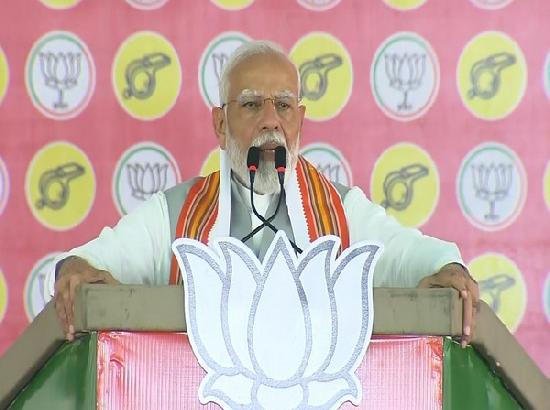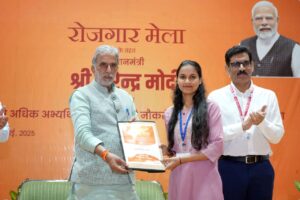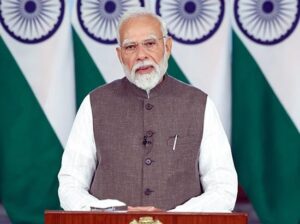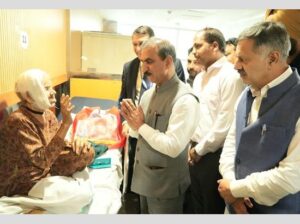From The Editor’s Desk
The Government of India has embarked on an ambitious journey to revolutionize the country’s infrastructure landscape, aiming to bolster economic growth, enhance connectivity, and improve the quality of life for its citizens. With a focus on modernizing transportation networks, upgrading urban amenities, and expanding digital infrastructure, the government has launched several transformative initiatives. From the development of highways, railways, and airports to the promotion of waterways and ropeway systems, these efforts are aimed at fostering inclusive and sustainable development across the nation. India has achieved significant milestones in infrastructure development, including the inauguration of the world’s longest highway tunnel, the Atal Tunnel, and the construction of the world’s highest railway bridge, the Chenab Bridge. Additionally, India has set records by unveiling iconic landmarks like the Statue of Unity – the world’s tallest statue and embarked on transformative projects like the Zojila Tunnel, Asia’s longest tunnel, for all-weather connectivity in Ladakh.[1] Further, from the architectural excellence of the Atal Setu in Mumbai, Bogibeel Bridge over Brahmaputra, Jaiswal Bridge and Dhola- Sadiya Bridge in the northeast, the infrastructure landscape in New India is reaching unprecedented heights.
Revolutionizing India’s roadways entails a comprehensive overhaul of the country’s transportation infrastructure, encompassing modernization, expansion, and connectivity. Through strategic planning and substantial investments, India is transforming its road network into a robust and efficient system.
The progress of national highways in India has been remarkable in the last 10 years, reflecting a significant increase in budget allocation and construction pace. Since 2014, there has been a 500% increase in the road transport and highway budget allocation, leading to a substantial enhancement in infrastructure development. The speed of highway construction reached an impressive 37 km/day in 2020-21, marking a record for the fastest highway construction in India.
Moreover, the National Highway (NH) network has expanded by 60% from 91,287 km in 2014 to 1,46,145 km by the year 2023. The length of 4-laned NH has increased by 2.5 times, from 18,387 km in 2014 to 46,179 km, as of November 2023. The average pace of NH construction has also seen a remarkable increase, rising by 143% to 28.3 km/day from the baseline 12.1 km/day in 2014.
With a comprehensive network spanning 1,46,145 km, national highways play a crucial role in connecting regions and spurring economic growth across the country, complementing the extensive state highways spanning 1,79,535 km and other road infrastructure spanning 65,45,403 km.
BHARATMALA: Road infrastructure development
India has witnessed significant progress in rural road infrastructure, with an impressive 3.74 lakh km of roads constructed since 2014 under the Pradhan Mantri Gram Sadak Yojana (PMGSY). This achievement has resulted in over 99% of rural habitations being connected, demonstrating the government’s commitment to enhancing accessibility and connectivity in rural areas. As of now, a staggering 7.55 lakh km of rural roads have been completed as compared to 3.81 lakh km of roads in 2013-14.
Bharatmala Pariyojana
The Bharatmala Pariyojana was launched with the primary focus on optimizing the efficiency of the movement of goods and people across the country. The key components of the Pariyojana are Economic corridor development, Inter-corridor and feeder routes development, National Corridors Efficiency Improvement, Border, and International Connectivity Roads, Coastal and Port Connectivity Roads and Expressways. 25 Greenfield high-speed corridors have been envisaged for development under Bharatmala Pariyojana. Out of which, 20 are completed or under various stages of implementation.[3] 34,800 km of National Highway length was planned for development under Phase-I of Bharatmala Pariyojana. As of Dec-2023, 26,418 km (i.e., 76% of 34,800 km) have been awarded for construction with completion of about 15,549 km.
India’s railway development reflects a remarkable stride towards modernization and improved connectivity, showcasing the Government’s commitment to enhancing transportation infrastructure for the nation’s progress.
Vande Bharat Trains
The Vande Bharat trains represent a significant advancement in India’s railway infrastructure, boasting enhanced safety features, faster acceleration, and improved passenger amenities. Equipped with Automatic Plug Doors, Reclining Ergonomic Seats, and Mobile charging sockets for every seat, these trains offer a comfortable and convenient travel experience. As of January 31, 2024, more than 100 Vande Bharat train services are operational across the Indian Railways, with an impressive overall occupancy rate of 96.62% during 2022-23.
Further, on March 12, 2024, Prime Minister flagged off 10 new Vande Bharat trains. During his address, he informed that that not only most of the states have got Vande Bharat trains but the century of Vande Bharat Trains has also been hit.
The Amrit Bharat Station Scheme
The Amrit Bharat Station Scheme has been launched for the development and modernisation of Railway stations in India. This scheme envisages the development of stations on a continuous basis with a long-term approach. The scheme has seen significant progress with 1318 stations selected for redevelopment.













